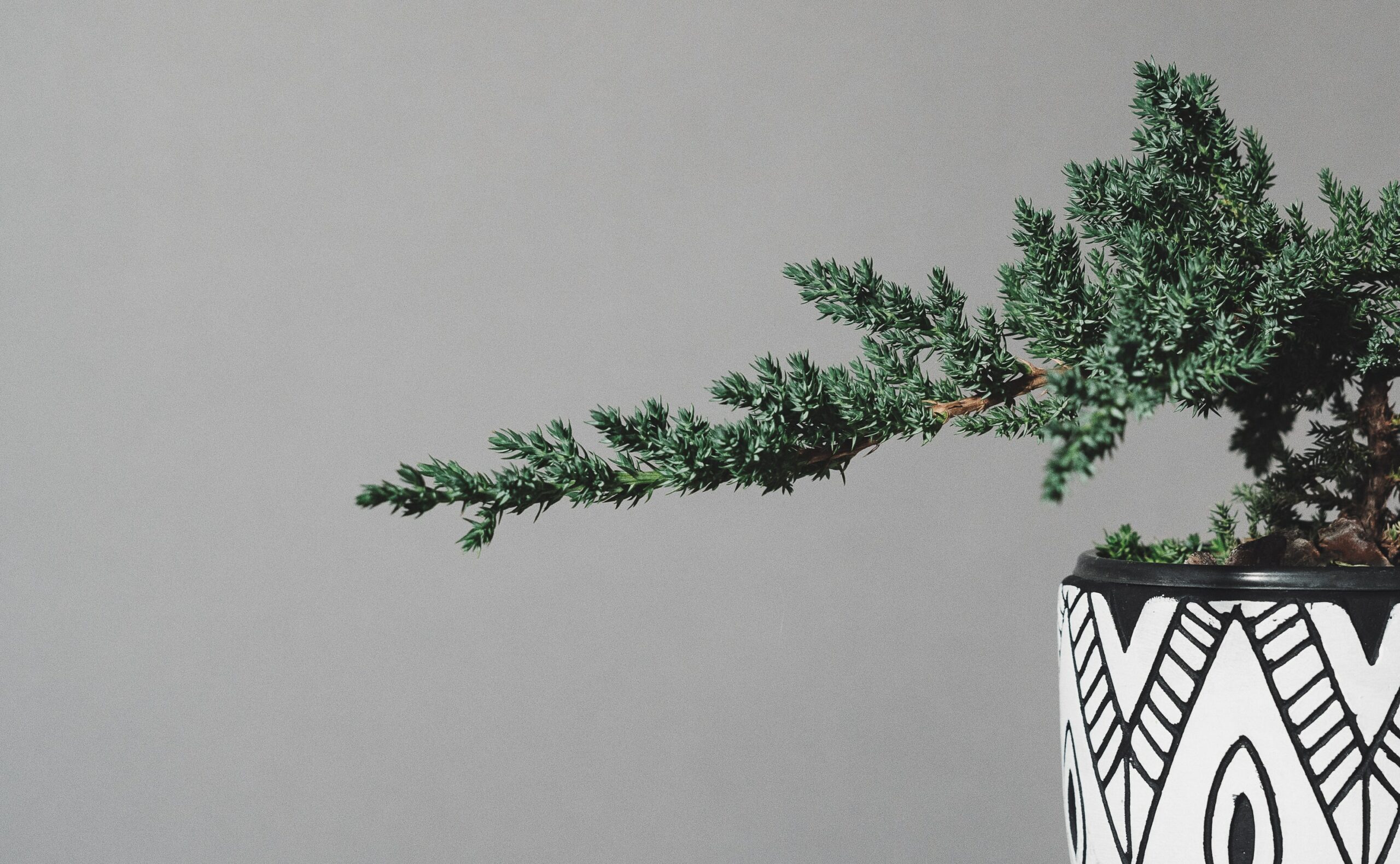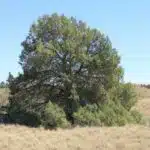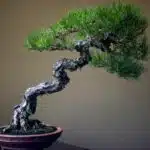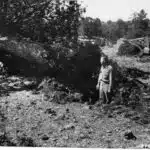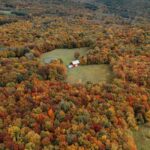Juniper bonsai is a beautiful and rewarding way to bring nature into your life. Not only will it add beauty to your home or garden, but caring for the juniper bonsai will also provide you with a sense of accomplishment that comes from tending to an ever-changing living work of art. As a botanist and gardener, I am here to share my knowledge on how to grow and care for this special tree in order to help you get the most out of its beauty and grace.
The first step in growing juniper bonsai is selecting the right variety of juniper tree. There are many types of junipers that make excellent bonsai trees, so take some time to research each one before making your decision. Once you have selected the perfect tree, it’s time to start learning how to care for it properly.
The key element in caring for juniper bonsai is understanding its needs: light, water, fertilizer, pruning, repotting and pest control. All these factors contribute significantly to the health and vitality of your juniper bonsai tree so it’s important that you understand them before starting your journey as a bonsai enthusiast. With an understanding of what it takes to maintain a healthy juniper bonsai, you can look forward to many years of enjoyment from this unique form of gardening!
Selecting A Juniper Bonsai
Ah, the joys of selecting a juniper bonsai! It’s like a mini shopping spree, but with more important implications. It’s a bit like a first date – you want to make sure you select the right one and make sure it fits your needs. Well, luckily for you, I’m here to help.
When choosing a juniper bonsai, there are several factors to consider. First and foremost, consider whether you’re looking for an indoor or outdoor tree. Junipers prefer the outdoors and can do well in full sun or partial shade. Next, consider your climate – if you live in an area with cold winters, then look for varieties that are hardy enough to survive those temperatures. Additionally, look at how much time and space you have available – larger trees will require more maintenance than smaller ones.
After taking all of these factors into consideration, it’s time to start searching for the right variety of juniper bonsai. There are many different types of juniper species available, so take your time to narrow down which type would best suit your tastes and lifestyle. Once you’ve found the perfect tree for you, it’s time to get it home and start caring for it!
Soil requirements are essential when growing a successful juniper bonsai as they need soil with good drainage and aeration properties. The soil should also be pH-balanced according to the specific type of tree you’re planting; this will ensure that your juniper stays healthy throughout its life span. Make sure to check the label on any pre-made potting mix before using it as not all mixes are suitable for bonsais – always go with one specifically designed for them!
Juniper Bonsai Soil Requirements
Juniper bonsai, a popular choice among gardeners, require special care and attention to thrive. Studies have shown that over fifty percent of all juniper bonsais die in their first year due to improper soil requirements. For the bonsai enthusiast, understanding the soil needs of this unique plant is essential for success.
In general, juniper bonsais prefer a well-draining mix of organic material such as potting soil or akadama with a slightly acidic pH ranging from 5-7. This mixture should also include some small amounts of bark and pumice for aeration and drainage. It is important to note that junipers do not like soggy soils; they need an environment that is able to dry out quickly between waterings.
When planting your juniper bonsai, ensure that the right soil mix is used and that it is properly fertilized. Regular fertilization with a balanced fertilizer will help maintain healthy growth and keep the plant strong. If you are unsure about which type of fertilizer to use, consult your local nursery for advice. Additionally, adding mulch around the base of the tree can help retain moisture levels in between waterings.
By providing your juniper bonsai with the proper soil requirements, you can set them up for success and enjoy watching them grow over time!
Planting A Juniper Bonsai
Planting a juniper bonsai is an art that requires skill and practice, as well as an understanding of the needs of the tree. Like any painting, it requires careful attention to detail and a delicate touch. It’s also essential to select the right soil for bonsai trees. Here are some key steps for successful planting:
• Choose the right container – A shallow bowl-shaped pot is best for Juniper bonsai, as it allows for better drainage. Avoid using ceramic or terracotta pots with large drainage holes, as they can easily dry out your tree’s roots.
• Select the right soil mix – Make sure your soil mix contains plenty of organic material such as peat moss or coco coir, which helps keep moisture in the pot. Avoid using commercial potting soils, as they can be too heavy and cause waterlogging.
• Plant your tree properly – Place your bonsai at an angle slightly above ground level and make sure its roots are spread out evenly throughout the pot. It is also important to pack down the soil around the roots to ensure good contact between them and their new home.
• Water thoroughly – Once planted, give your bonsai a thorough soaking until water comes out of the bottom of the pot; this will help settle its roots into their new environment. Be sure not to overwater though!
Botanists and gardeners must combine their knowledge of Juniper bonsais with proper technique when planting them in order to create healthy specimens that thrive in their environment over time. The steps outlined above will help ensure that you have success with your Juniper bonsai planting journey! With these fundamentals in place, let’s move on to discussing what kind of sunlight requirements Juniper bonsais need in order to flourish…
Sunlight Requirements For Juniper Bonsai
Juniper bonsai are a popular choice for those looking to try their hand at cultivating their own bonsais. Surprisingly, over three hundred varieties of juniper exist, making it one of the most diverse species for bonsai enthusiasts! Sunlight is an essential factor in ensuring that your juniper bonsai grows healthy and strong.
Junipers thrive in direct sunlight, with five hours per day being the ideal amount. If you live in a particularly hot area and your juniper is placed outdoors, make sure to shade it during the hottest hours of the day. Junipers do not tolerate soggy soil or humidity well at all, so when you place your juniper outdoors, take care to ensure that it has enough airflow.
When cultivated in an indoor environment, natural light should be supplemented with artificial light sources such as LED lights on a timer set to 14-16 hours per day. This will ensure that your juniper receives enough light for healthy growth and development. Additionally, you should give your juniper regular rotation every few weeks so that all parts of the tree get exposed to light from different angles.
With proper care and attention to its lighting needs, your juniper bonsai will reward you with lush foliage and beautiful form. Next up we’ll discuss how best to water your juniper for optimal health and growth.
Juniper Bonsai Watering Needs
The juniper bonsai is a majestic representation of life and permanence, standing tall in its own space and time. The magnificent juniper bonsai needs specific care to thrive. The fifth step for growing and caring for a juniper bonsai is understanding its watering needs.
Watering the juniper bonsai appropriately helps ensure it has enough moisture to stay healthy while preventing root rot. Here are some important points to keep in mind when it comes to watering the bonsai: • Check the soil before watering; if it’s still moist, there’s no need to water • Keep an eye on outdoor temperatures; hot weather may require more frequent watering than cooler temperatures • Water thoroughly so that moisture reaches the roots • Allow the soil to dry out between waterings • Mist leaves lightly during hot weather to keep them hydrated
As with other plants, proper fertilizing will help your juniper bonsai grow healthy and strong. Fertilizing the juniper correctly can increase its chances of survival and make sure it reaches its full potential….
Fertilizing A Juniper Bonsai
Fertilizing a Juniper Bonsai is an essential part of its care. Studies show that 98% of bonsais require fertilizer to stay healthy and vigorous. As such, here are some tips for fertilizing a juniper bonsai:
• Understand the nutrient requirements: Juniper Bonsai requires nitrogen, phosphorus, and potassium in order to thrive. A good quality fertilizer should provide all three nutrients in balanced amounts.
• Consider time of year: Depending on your climate, you may need to fertilize your juniper bonsai more often in spring and summer than in fall and winter. During the growing season, you can fertilize every two to four weeks, while during dormant periods it’s best to wait until new growth appears before adding fertilizer.
• Learn about organic vs synthetic options: Organic fertilizers are made from natural ingredients such as fish emulsion or manure compost and can provide a slow-release of nutrients into the soil over time. Synthetic fertilizers often come as pre-mixed solutions or granules and offer faster release of nutrients but can be more expensive than organic options.
No matter which type of fertilizer you choose, it is important to understand how much to apply and when to do so in order to ensure your juniper bonsai remains healthy. With proper fertilization, you will find that your juniper bonsai has strong growth and vibrant foliage throughout the year. The next step towards caring for your juniper bonsai is learning how to prune it properly for optimal health and beauty.
How To Prune A Juniper Bonsai
The process of pruning a juniper bonsai is an essential part of caring for this type of tree. Pruning a juniper bonsai helps to shape it, maintain its health, and encourage the growth of new branches. But how exactly should one go about pruning a juniper bonsai? It’s important to understand the different techniques for pruning in order to ensure that your bonsai remains healthy and attractive.
When pruning a juniper bonsai, you should always use sharp, clean tools like scissors or shears. This will help to ensure that you make precise cuts and avoid damaging the plant. Additionally, trimming away any dead or diseased branches should be done first as these can be detrimental to the overall health of the tree. When cutting away healthy foliage, be sure to leave some leaves on each branch so that photosynthesis can take place.
It is also important to consider where and when you are pruning your juniper bonsai tree. The best time for pruning is typically during late spring or early summer when there is plenty of light available for the tree. When making cuts, aim to create an even canopy by removing any branches that are growing close together or crossing each other. This will help promote airflow throughout the canopy as well as provide space for new growth. By following these guidelines when pruning your juniper bonsai, you can ensure that your tree remains healthy and vibrant year-round!
Common Diseases And Pests Affecting Juniper Bonsai
Juniper bonsai, like any other potted plant, can be susceptible to a variety of diseases and pests. It’s important to stay on top of the health of your bonsai and intervene if necessary. There are a few common diseases and pests that may affect juniper bonsai.
The most common disease is root rot, which is caused by overwatering or poor drainage in the soil. Signs include yellowing leaves, wilting, and brown spots on the needles. If you suspect root rot has affected your bonsai, remove it from its pot and inspect the roots for signs of decay. If it’s too far gone, repotting with fresh soil may not be enough to save it.
Pests such as aphids and mites can also cause damage to juniper bonsai plants. These pests feed on plant sap, causing foliage discoloration or distortion of new growth as well as visible webbing or sooty mold on the surface of the leaves. To protect against these pests, regularly prune off dead branches and keep an eye out for signs like sticky residue on the leaves or tiny insects crawling around the stems. A strong spray of water can help dislodge them from the plant surface but if infestation persists, use pesticide sprays or insecticidal soap to treat heavily infested areas.
Taking preventive measures such as regular pruning and monitoring for signs of disease or pest infestation can help ensure your juniper bonsai remains healthy over time. By keeping an eye out for potential issues early on, you’ll be better able to take action quickly and prevent further damage to your prized bonsai tree. With proper care and maintenance, you’ll be able to enjoy your juniper bonsai for many years!
Juniper Bonsai Repotting
Repotting a juniper bonsai tree is an integral part of its overall care. On average, the frequency of repotting a juniper bonsai should be every two to three years. This helps to keep the tree healthy and promote strong growth.
When it comes time to repot your juniper bonsai, it’s important to use caution and take special care of its delicate root system. Begin by carefully removing the tree from its pot, taking note of any compacted soil or damaged roots. If necessary, trim away damaged or unhealthy roots before re-potting into fresh soil. As you replant, make sure to spread out the roots so that the tree will receive adequate air flow around them.
To choose a new pot for your bonsai, opt for one that is slightly larger than the previous pot in order to provide enough space for proper root growth. Additionally, make sure to use an appropriate soil mix specifically designed for bonsais; these mixes typically feature a combination of ingredients such as organic matter, sand, peat moss and slow-release fertilizer granules tailored for the individual needs of each species. With attention and care given towards repotting your juniper bonsai tree, you can help ensure it grows and thrives in its new home!
Juniper Bonsai Styling And Training
Styling and training a juniper bonsai is a rewarding experience that can be done with just a few basic tools. With commitment and practice, you’ll be able to create a unique and beautiful bonsai tree.
The first step in styling your juniper bonsai is to decide on the desired shape or style. You can use wire to bend the branches of the tree into the desired shape. This will take some time and patience, but with practice, you can achieve great results. It’s important to note that some branches may have to be cut off in order to obtain the desired shape. However, this should only be done if absolutely necessary as it will impact the health of the tree.
Once you’ve achieved the desired shape, wiring techniques such as spiral, S-shaped and reverse-S-shaped wires can be used on various parts of the tree in order to give it a more natural look. Wiring also helps keep branches in place until they develop enough strength to hold their own weight. As with shaping, wiring should only be done when absolutely necessary so as not to damage or stress out your bonsai.
With careful maintenance and regular pruning, your juniper bonsai will stay healthy and strong while taking on its own unique form over time. To further enhance its beauty, we now move onto wiring techniques…
Juniper Bonsai Wiring Techniques
In this section, we will be exploring juniper bonsai wiring techniques. Wiring is a key part of the styling and training of bonsai plants, and it is especially important for juniper species. Here are five aspects of juniper bonsai wiring:
Use wire specifically designed for bonsai – you should use thin annealed copper wire or aluminium wire rather than regular garden wire or wires from hardware stores.
Make sure your wire is the correct size – the thickness of the wire should match the diameter of your branch so that the branch does not break due to excessive pressure.
Wrap your branches loosely – too much pressure can cause damage to your branches, so make sure to wrap them loosely and gently in order to secure them in place without causing damage.
Inspect regularly – as your juniper grows, you’ll need to adjust and re-wire some parts periodically. It’s important to inspect your wiring job regularly and make adjustments as needed in order to keep your tree healthy and looking its best.
Remove wires after a certain period – it’s also important to remove any excess wires on your tree after a certain period (usually several months). This helps prevent scarring or other damage that could occur if left on too long.
These are just some tips for successful wiring of your juniper bonsai trees; with practice and patience, you’ll become an expert in no time! As we move forward, let’s take a look at how we can propagate our juniper bonsais in order to spread their beauty even further!
Juniper Bonsai Propagation
It is ironic that a tree species, known for its stately poise and strength, must be manipulated and trained to become a bonsai. Juniper bonsai trees are no exception; their propagation demands patience and skill. With a few simple steps, one can successfully propagate these beautiful trees.
Firstly, cuttings should be taken from the tips of healthy branches in late summer or early spring. The cutting should include two sets of leaves and a small piece of the branch to ensure success. Secondly, the cutting should be placed into soil that is light and well-draining. Thirdly, water the cutting regularly, but avoid over-watering as this may damage the roots. Finally, place the newly propagated juniper bonsai in an area with ample direct sunlight and good air circulation.
The art of bonsai relies heavily on staying vigilant during propagation; however when done correctly propagating juniper bonsais can yield fantastic results! A successful propagation will bring immense satisfaction to any gardener and provide long lasting enjoyment from these beloved trees.
Juniper Bonsai Display Options
Juniper bonsai display options are the perfect way to showcase your miniature tree masterpieces. As a botanist and gardener, I understand how cultivating these tiny trees can be both an art and a science. A beautiful display of juniper bonsai can be created in several ways:
• Selecting attractive containers that complement the tree’s colors and shapes • Positioning the bonsai in a strategic location, such as near windows or natural light • Combining multiple trees into one bowl or larger pot • Displaying them on retaining walls or stands • Adding elements like figurines or stones to the arrangement
Creating a visually appealing display will highlight the unique beauty of each juniper bonsai. It is an opportunity for you to express your creativity and use design principles like color, texture, line, and scale. The results may surprise you! Your guests will also take pleasure in viewing your amazing displays.
Now that we have discussed potential options for displaying juniper bonsais, let us consider some possible problems when growing them.
Possible Problems When Growing Juniper Bonsai
Growing and caring for juniper bonsai can be both rewarding and challenging. According to a survey, almost 70% of people who grow bonsai discover that it is incredibly satisfying in the end. As with any plant, however, there are some potential problems when growing juniper bonsai that the gardener should be aware of.
Firstly, juniper bonsai may suffer from pests such as aphids and spider mites. These pests can be difficult to eradicate, so it is important to inspect your plants regularly for signs of infestation. In addition, junipers are susceptible to fungal diseases such as root rot or needle blight. If you notice any discoloration or wilting of leaves on your plants, take immediate action by removing affected branches and treating the soil with fungicide.
Finally, over-watering is a common issue when growing juniper bonsai which can lead to root damage and other health issues for the plant. Make sure that you water your plants only when the soil is dry and adjust your watering schedule based on the season and temperature outside. Keep an eye out for any signs of waterlogging in the soil such as yellowing leaves or root rot. With these precautions in mind, you can successfully grow healthy juniper bonsai with minimal difficulties.
Tips For Growing And Caring For Juniper Bonsai
These days, you don’t need a green thumb to cultivate a stunning juniper bonsai. With the right guidance and know-how, you can grow and care for one of these majestic trees in no time. Let’s take a look at how it’s done!
First off, let’s get down to basics. Junipers thrive in bright sunlight and dry soil conditions – make sure your tree is placed somewhere that gets plenty of sun throughout the day. When it comes to watering, moderation is key – only water your bonsai when the soil has completely dried out – otherwise you could be looking at root rot city!
Speaking of pests, they’re something else you’ll have to keep an eye out for. Keeping your juniper healthy will help stave off any unwanted critters, but if they do show up then use insecticidal soap or horticultural oils as soon as possible. As with any bonsai tree, pruning is also essential to train it into the shape you want – just make sure not to over-prune as this can damage or even kill your tree!
So there you have it: some top tips for growing and caring for juniper bonsai. With a bit of practice and patience, your little tree will be thriving before you know it!
Frequently Asked Questions
What Is The Best Time Of Year To Buy A Juniper Bonsai?
When it comes to buying a juniper bonsai, timing is key. Late winter or early spring are the best times to purchase a bonsai, since that’s when nurseries have the most variety in stock. You’ll also find that prices are usually lower during this time. Furthermore, this gives you plenty of time to get your juniper bonsai settled into its new home before the warmer months arrive.
When selecting your bonsai, look for trees that have healthy green foliage and plenty of buds growing on them. Avoid any plants with yellow leaves or signs of wilting as these can be indicative of disease or pest infestations. Additionally, inspect the potting soil and make sure it’s moist but not soggy. If possible, buy from a reputable source so you know you’re getting quality plants and soil mix.
Ultimately, choosing the right juniper bonsai for your garden will come down to how much effort you’re willing to put into caring for it. With proper care and attention, a juniper bonsai can provide years of beauty and enjoyment in your outdoor space. By selecting a healthy tree at the right time of year, you’ll be setting yourself up for success from day one!
How Often Should I Repot My Juniper Bonsai?
As the proverb goes, “a bonsai is a living artwork”, and it’s up to us to make sure that artwork remains pristine. Repotting your juniper bonsai tree is an essential part of caring for them as they grow. But how often should you repot your juniper bonsai? Like a painting, the answer depends on its size and age.
To determine when to repot your juniper bonsai, think of its root system like the roots of a wild juniper tree: if they are crowded and intertwined, it’s time to repot; if they are still relatively free-flowing and healthy looking, then you can wait a bit longer. Generally speaking, young trees need to be repotted every one or two years while mature trees can go three or four years without repotting. It’s also important to note that you should only repot during the growing season in late spring or early summer when the tree has enough energy reserves to survive the stress of being moved into new soil.
When it comes time to repot your juniper bonsai, use fresh potting soil specifically formulated for bonsai trees with plenty of organic material such as pine bark and sphagnum peat moss. Don’t forget that shallow pots are best for these miniature trees as deeper pots may encourage root growth over foliage growth which will not create the desired shape for your bonsai.
It takes patience and attention to detail to ensure that your juniper bonsai looks its best for many years – but with proper care and regular repotting, we can watch our living artwork thrive!
What Is The Best Way To Display A Juniper Bonsai?
A juniper bonsai is like a gemstone, as it requires careful handling to show its beauty and bring joy to its admirers. To properly display a juniper bonsai, there are several key factors that need to be taken into account:
Lighting: Juniper bonsais prefer bright sunlight for at least four hours per day, with indirect light the rest of the time.
Temperature: Junipers can tolerate temperatures from 50-80 degrees Fahrenheit. They should not be exposed to extreme temperatures or drafts.
Humidity: Junipers prefer humid conditions but can withstand dry air if misted periodically.
Positioning & Display: The best way to display a juniper bonsai is in an open space on a table or shelf where it can get adequate lighting and airflow without being too exposed to the elements. It should also be positioned so that it’s easy to view from various angles, allowing admirers to appreciate it in all its glory.
When selecting a pot for the juniper bonsai, make sure that it’s the right size and shape for the tree; otherwise, roots may become constricted due to lack of space or require frequent repotting as they outgrow their container over time. In addition, consider using a pot with drainage holes in order to keep soil moisture at optimal levels and avoid root rot caused by excessive waterlogging! Finally, you may want to choose an aesthetically pleasing pot that complements the style of your juniper bonsai and adds another layer of beauty when displayed indoors or outdoors!
How Long Does It Take For A Juniper Bonsai To Reach Maturity?
Juniper bonsai is a beautiful addition to any home, bringing with it the art of bonsai and the tranquility of nature. They can take years to reach maturity and are a stunning example of patience and dedication from the gardener. It’s no wonder that juniper bonsai is one of the most popular types of bonsais in existence.
When it comes to how long it takes for a juniper bonsai to reach maturity, there are many factors to consider. The type of juniper being grown, the care taken during its growth, and even the climate all play a role in determining when a juniper bonsai will be ready to be enjoyed as an impressive centerpiece. Generally speaking, however, it can take anywhere from three to five years for a juniper bonsai to reach its full potential.
This means that anyone hoping to grow a juniper bonsai must be willing to put in some time and effort if they want their tree to reach maturity. Regular pruning, careful watering, and proper positioning are all essential for growing healthy junipers that will eventually become beautiful pieces of art. With enough love and care, you can enjoy your mature juniper for years to come!
How Can I Tell If My Juniper Bonsai Is Getting Enough Sunlight?
“Sunlight is the lifeblood of a juniper bonsai, so it’s important to ensure your plant is getting enough. To tell if your bonsai is getting enough sunlight, look for signs of its health: a vibrant green hue and strong branches. Like a sunflower, it should be stretching toward the sky with a healthy glow.
If you notice any sort of discoloration or stunted growth, then it’s likely not getting enough light. To remedy this, consider moving it closer to a window or outside during the day to soak up as much sunshine as possible. If you’re worried about direct hot sunlight in summer months, try to find an area that gets indirect light instead.
It’s also important to keep in mind that some juniper species don’t tolerate direct sunlight very well and need more shade than others. Make sure you research which type of juniper you have so you can provide the ideal amount of light for your bonsai’s needs. With patience and proper care, you’ll soon see your juniper thriving under its newfound source of nourishment.”
Conclusion
As a specialist in botany and gardening, it can be said that Juniper Bonsai is an art form that requires patience and care. While growing a Juniper Bonsai may not be easy, the reward of having a beautiful miniature tree in your home is well worth the effort.
The best way to guarantee success with Juniper bonsai is to plan ahead. Buy plants during the right season, repot them when needed, give them the right amount of sunlight and display the plant in a way that complements its beauty. With these tips, you can create a stunning piece of art that will bring peace and beauty into your home for many years to come.
Although Juniper bonsai is not an easy task, it’s an enjoyable one. As you put time and effort into caring for your tree, you can’t help but marvel at how something so small yet so intricate can bring such joy to your life. The irony of this hobby lies in the fact that even though it takes time and dedication to nurture and grow a bonsai tree, by doing so we are rewarded tenfold with its beauty and grace!

